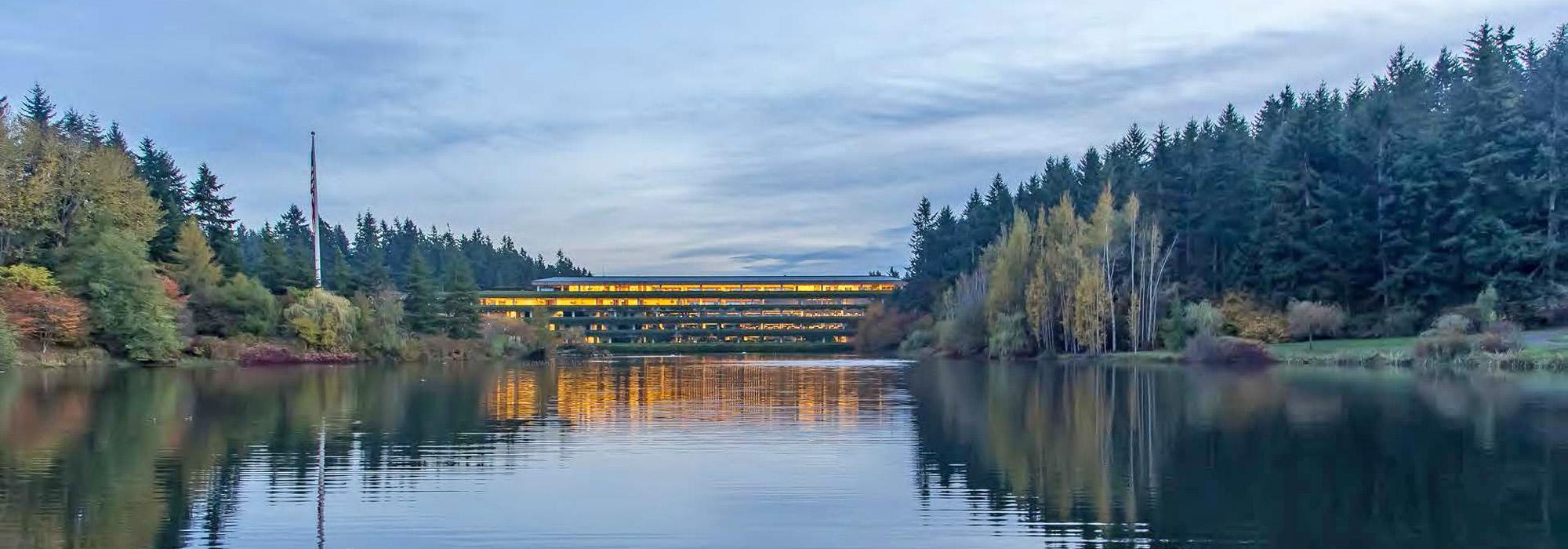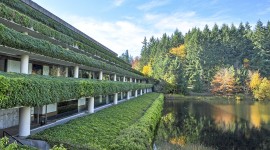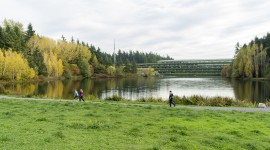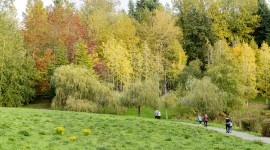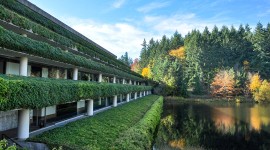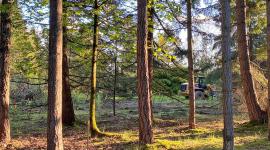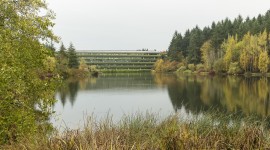Stalemate at Weyerhaeuser
As The Cultural Landscape Foundation (“TCLF”) wrote in a letter to the U.S. Army Corps of Engineers (“Corps”) on July 11, 2021: “The Section 106 review process for the former Weyerhaeuser Corporate Headquarters campus has been largely stagnant for months.” The former Weyerhaeuser site, considered “the world’s most important corporate campus” and designed by landscape architect Peter Walker and architect Edward Charles Bassett, is now owned by Industrial Realty Group (“IRG”) which plans to build hundreds of thousands of square feet of generic warehouses. Municipal officials in the City of Federal Way, the location of the campus, have given a thumbs up to the warehouse construction project.
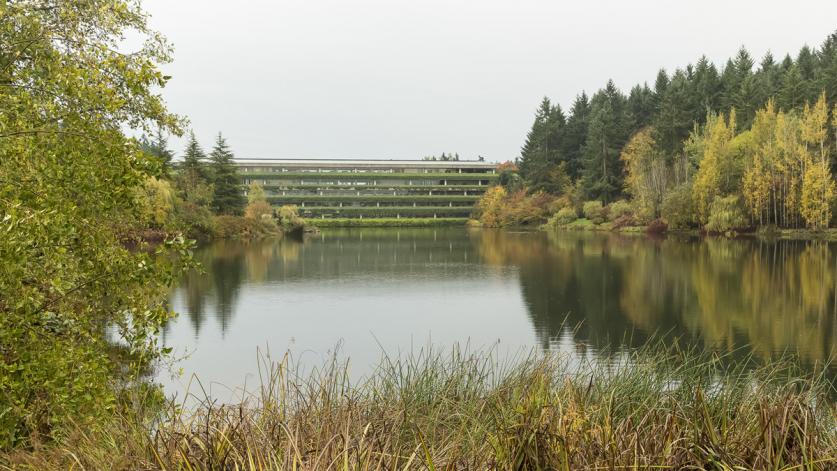
The Corps and the Washington State Department of Archaeology and Historic Preservation (“DAHP”) acknowledge that the construction of new warehouses would create an adverse effect – a “puncture wound” – on the campus. However, rather than treat the campus as a unified whole, as it was created and as it is recognized by scholars globally, for the purposes of the resolution of adverse effects the building architecture and landscape architecture are being separated and treated unequally.
In a proposal negotiated outside of the biweekly Section 106 meetings, between IRG and the State Department of Archaeology (DAHP), the campuses’ building architecture is being given priority over the equally significant landscape architecture. According to the meeting minutes from the July 2, 2021, Section 106 meeting, it would appear that the Corps accepts this baseline: “The Corps believes the mitigation DAHP has developed would be sufficient to resolve adverse effects.”

IRG, DAHP and the Corps, have repeatedly stated that the easements would prevent development on 25% of the campus. However, during a July 12, 2021, Section 106 meeting, it was determined that the 25% number was inflated and included part of the campus for which IRG is not currently seeking warehouse building permits.
TCLF has repeatedly called for the campus to be treated holistically (as a Historic Property likely eligible for listing in the National Register of Historic Places). Instead, the Corps is asking consulting parties to choose between easements that would protect the main building façade and the circumscribed viewsheds to and from that historic structure or measures that would address the actual adverse effects they have identified. With all due respect to the arguments the Corps has made in the past two consultation meetings, we continue to believe that this is a false choice. Moreover, consulting parties are being told that a holistic approach that would minimize and mitigate adverse effects – the “puncture wound” – and retain the protective easements also proposed would be unfair to the developer.
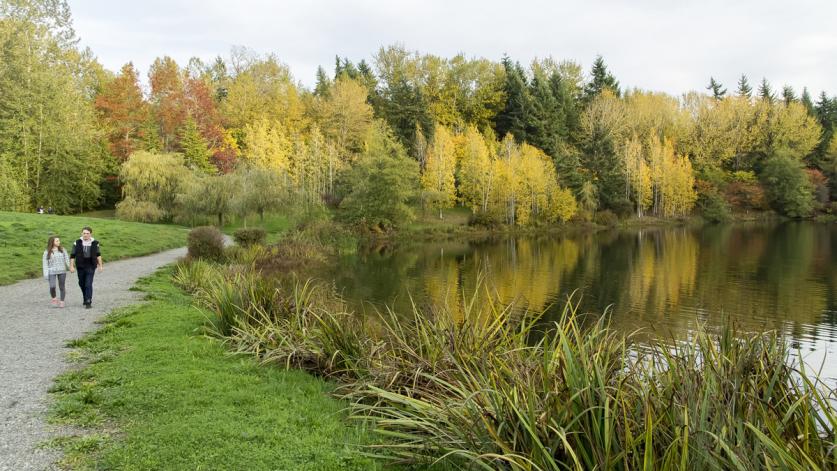
The bi-weekly Section 106 meetings – conducted by telephone and without real time joint video access that would allow for less confusion and greater clarity in the conversations – have grown from 60 minutes to 90 minutes in length. Nevertheless, nothing has fundamentally changed for months. The Section 106 review had the benefit of the participation of the Weyerhaeuser’s original landscape architect, Peter Walker, FASLA, the landscape architect of the 9/11 Memorial New York City and a practitioner of global renown, one of Walker’s principals, Adam Greenspan, FASLA, and Rene Bihan, FASLA, the Principal of the San Francisco office of SWA. While their participation may have provided intellectual stimulation for some, their collective extensive knowledge and depth of understanding of landscape architecture and of this site in particular, which far exceeds that of other participants in this process, has been wasted.
That’s why, on May 18, 2021, Walker bowed out of participation. He was both professional and magnanimous in offering to provide his expertise, if necessary, but he was clear in saying that “the ability to actually influence the resolution of adverse effects through this public review process has been taken out of our hands (emphasis added).”
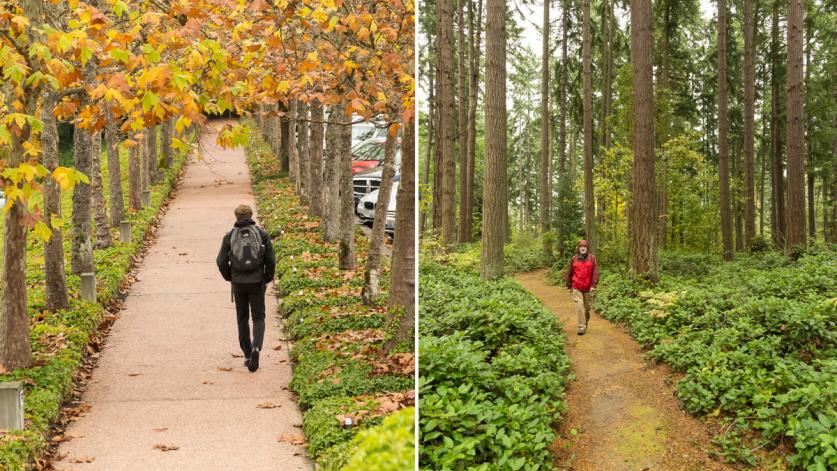
TCLF got involved as a consulting party because of the threat to an international icon of postwar design that is an extraordinary synthesis of landscape architecture and building architecture and the first such corporate campus deeply steeped in healing and stewarding ecological systems. Over many months we have called for the character-defining parking terraces to be included as part of the easement proposals. We spent considerable time discussing the scope and scale of the adverse effects associated with the “puncture wound.” We requested that it be clearly articulated so that there is a shared understanding about this adverse effect, information which is foundational to monitoring and mitigation recommendations that would follow. We suggested that we need a clear acknowledgement of what to expect, a shared understanding of the scope and scale of the effects, and the mitigation and monitoring tools to address them.
Everything TCLF has called for or suggested has been rejected.
The National Trust for Historic Preservation’s Betsy Merritt, one of the nation’s leading Section 106 review experts, advises that the Corps can call for additional minimization and mitigation above and beyond the proposal developed by DAHP and IRG. The Corps has the ability, but does it have the will?



